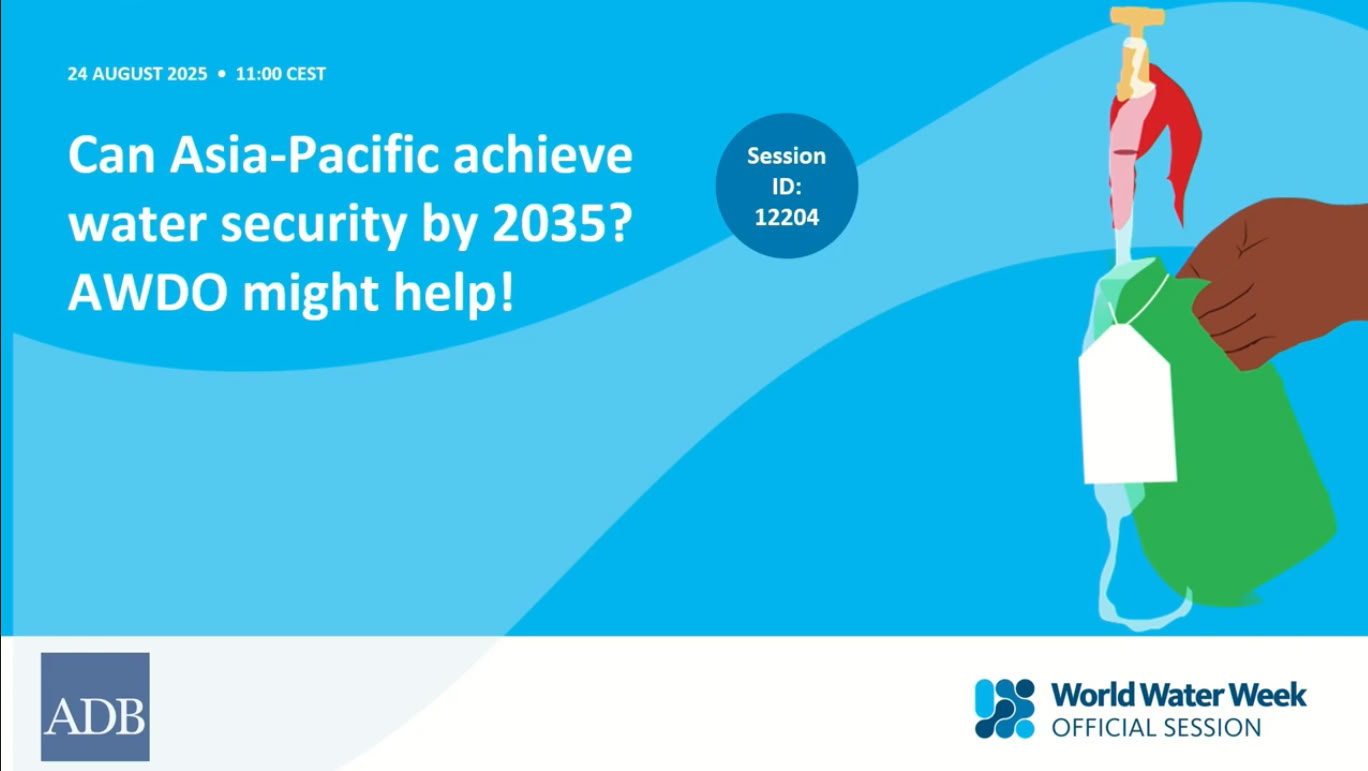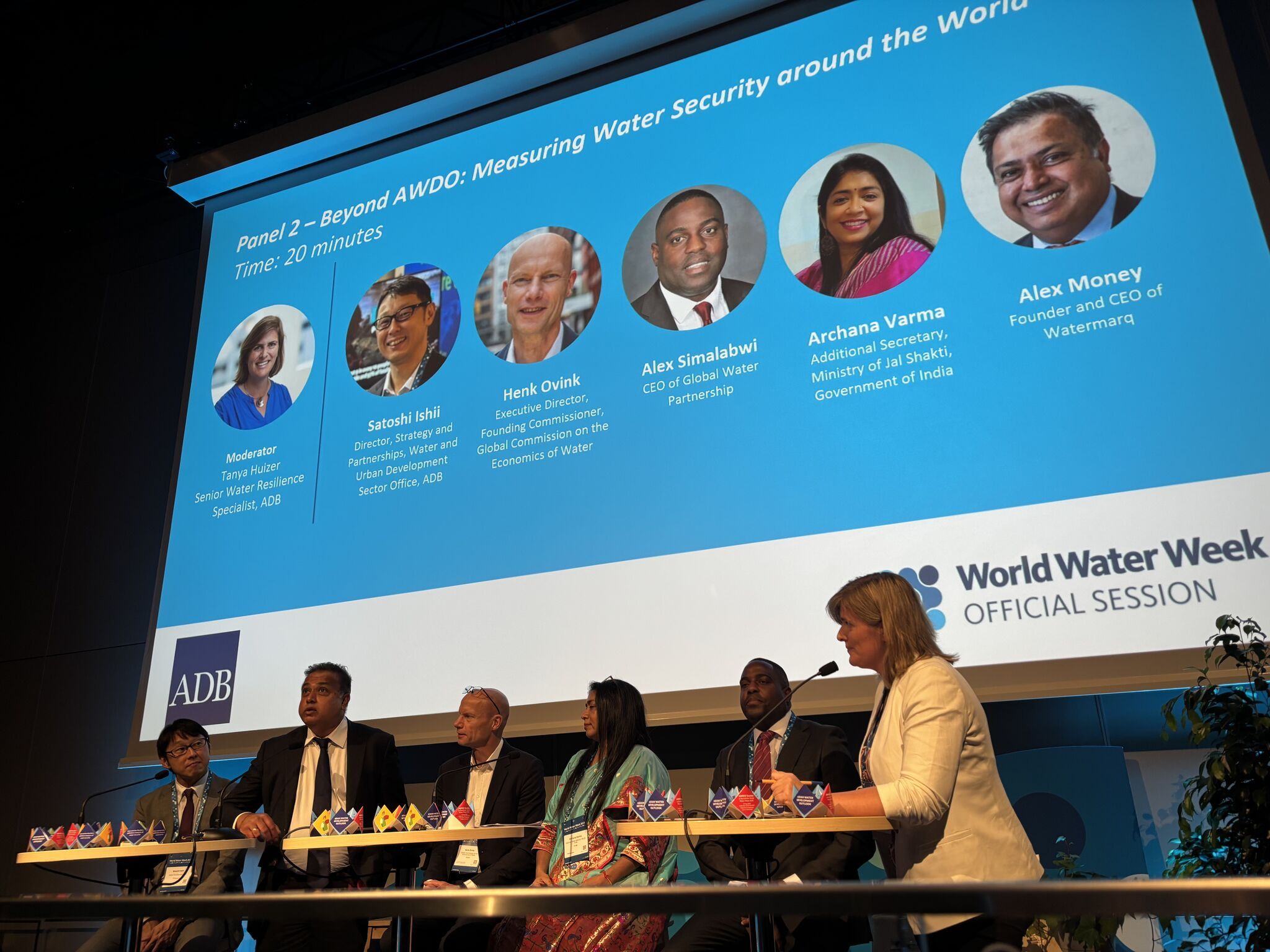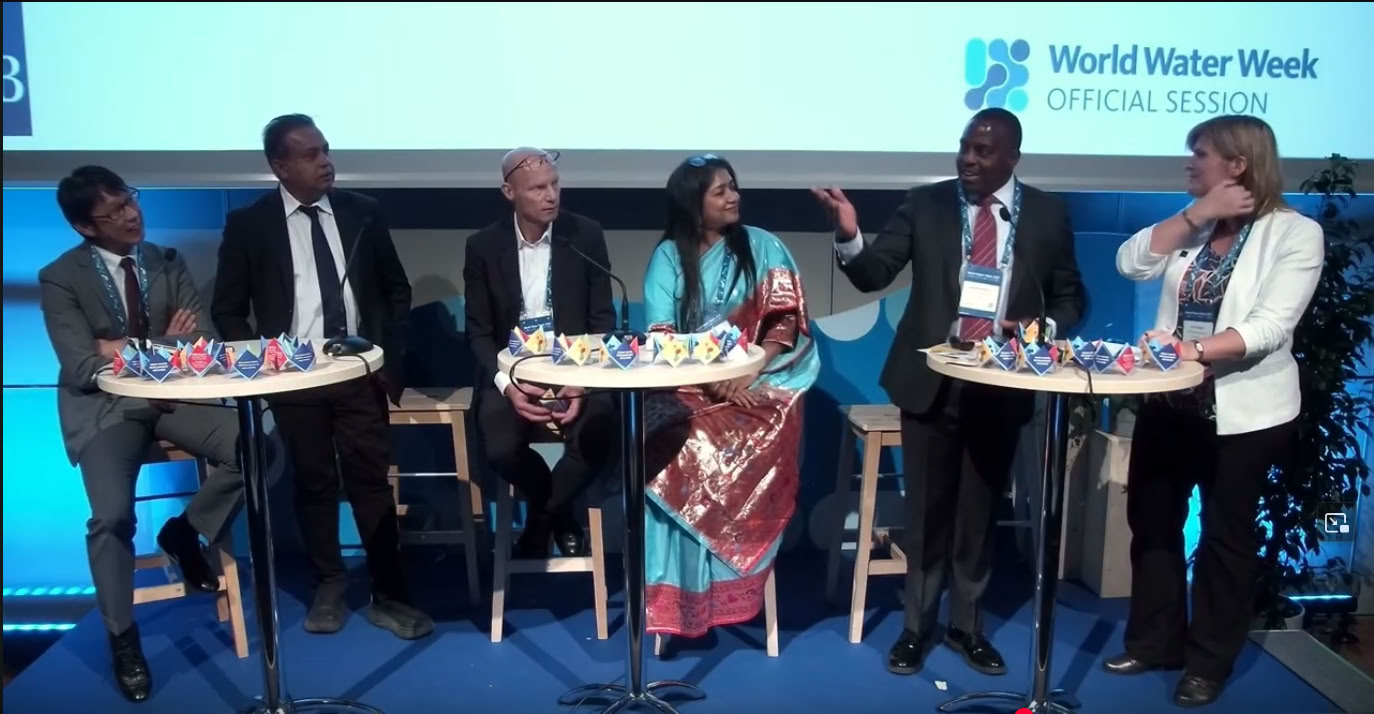This initiative is part of a broader collaboration between the Global Water Partnership Organisation (GWPO) and the Asian Development Bank (ADB), launched in January 2025. The partnership aims to strengthen the evidence base for water-related decision-making across Asia by aligning AWDO’s five Key Dimensions of water security with SDG indicator 6.5.1, which tracks IWRM implementation. Five Asian countries, Bangladesh, Cambodia, Nepal, Pakistan and Tajikistan are being selected for 2025 as case studies for the thematic chapter on the continental-level relationship between water security, and water governance.
What is AWDO?

The Asian Water Development Outlook (AWDO) is a flagship knowledge product of the Asian Development Bank (ADB), first launched in 2007 in collaboration with the Asia-Pacific Water Forum (APWF). It provides a comprehensive assessment of water security across the Asia-Pacific region.
Key facts about AWDO:
Four editions pf the outlook report has been published in 2007, 2013, 2016, 2020, and now in 2025, where the first soft launch was made at the World Water Week held in August 2025 in Stockholm, Sweden. Sustained collaboration between academic institutions, governments, and industry partners across the region has been a key factor in the development and evolution of the report. The strategic communication tool offers insights into the state of water security to the member countries in the region and provides guidance to prioritise and recommended actions. It further helps the development partners in the region to align national priorities with regional water security goals.
AWDO and SDG 6.5: Complementary Tools for Water Governance
AWDO and SDG 6.5 monitoring frameworks offer complementary insights into water governance to ensure water security in countries. While AWDO evaluates five Key Dimensions (KDs) - rural household, economic, urban, environmental, and disaster-related water security and SDG 6.5.1 evaluates the enabling environment, institutional arrangements, management instruments, and financing for IWRM.
Together, these tools help identify the drivers of progress in water security, barriers to effective governance and actionable pathways for sustainable water management. ADB intends to use the findings to inform Country Partnership Strategies (CPS) and design actionable water projects that align with national development goals and SDG targets.
Methodology: Country-Led, Expert-Driven
The project ran from January to June 2025, with GWPO providing technical oversight. National experts representing three countries of GWP SAS, Bangladesh, Nepal, and Pakistan conducted desk studies using country-specific data, comparing AWDO scores with IWRM implementation levels.
The process included analysis of SDG 6.5.1 survey data, national policies, laws, and programmes. Internal GWP consultations and expert group discussions with ADB were conducted before finalising the reports. This rigorous approach ensured that the assessments were both technically sound and contextually grounded.

Country Highlights
Bangladesh: Progress Amid Persistent Gaps
The findings of Bangladesh revealed that the rural household water security (KD1) and these gains were driven by national programmes such as the Safe Water Supply Project and the 2014 National Strategy for Water Supply and Sanitation. However, over 22 million people remain exposed to arsenic contamination, particularly in the Barind and coastal regions. The economic water security (KD2) improved presumably supported by the 2100 Bangladesh Delta Plan, 2022 National Industrial Policy, and efforts by institutions such as the Barind Multipurpose Development Authority. Nevertheless, water allocation across agriculture and industry remains inefficient due to a lack of abstraction permits, pricing mechanisms and integrated water budgeting, which constrains both productivity and sustainability. The Urban water security (KD3) had only a marginal increase as the major cities like Dhaka, Khulna, and Chattogram continue to experience high levels of non-revenue water, inadequate sanitation, and exposure to flooding and salinity. Environmental water security (KD4) remained relatively stagnant - pollution of key rivers, declining ecological flows and degradation of wetlands persist. The KD4 continues to suffer from the weakest enabling environment and monitoring architecture among all dimensions. The water-related disaster security (KD5) declined initially but later recovered modestly because of the well-developed physical infrastructure such as embankments and cyclone shelters. Still non-structural response, including early warning systems and forecast-based financing, are underutilised.
The institutional silos, weak enforcement and limited financing across all KDs constrain the operationalisation of IWRM. Bangladesh should institutionalise cross-sectoral coordination, enforce environmental flow standards, develop sustainable financing mechanisms, expand urban WASH investments and integrate slow-onset climate hazards into national water and climate planning frameworks to address the above challenges and to ensure inclusive, climate-resilient water governance by 2030.
Nepal: Unlocking Water Potential Through Governance
Nepal’s water security landscape is marked by abundant resources but underutilisation and governance challenges. Rural Water Security (KD1) reaches 91% of the population, but nearly half the systems are contaminated or poorly maintained. Economic Water Security (KD2) suffers from low water use (<8%), missing opportunities in irrigation, hydropower, and industry. Urban Water Security (KD3) is strained by population growth, stormwater issues, and aquifer depletion. Environmental Water Security (KD4) is deteriorating due to pollution, biodiversity loss, and e-flow disruptions. Disaster-Related Water Security (KD5) is threatened by floods and landslides, impacting infrastructure and communities.
Nepal’s three-tier federal system faces overlapping mandates and unclear jurisdiction, limiting IWRM implementation. Key recommendations include:
- Clarifying roles across government levels to improve coordination.
- Strengthening local and provincial capacities, especially for water quality and service delivery.
- Implementing cross-sectoral basin planning and data sharing.
- Promoting nature-based solutions, pollution control, and water storage.
- Investing in resilient infrastructure using innovative finance tools like green bonds and Public Private Partnership (PPP) models.
Pakistan: Bridging the Gap Between Policy and Practice
Pakistan’s water security shows moderate improvement, still with persistent systemic issues. Rural Water Security (KD1) remains stagnant, with contamination, weak monitoring, and limited local engagement. Economic Water Security (KD2) is declining due to population growth, low storage, and groundwater overuse. Urban Water Security (KD3) is under pressure from 10% annual demand growth, urban flooding, and untreated wastewater. Environmental Water Security (KD4) is weakening due to climate vulnerability, institutional conflict, and ecosystem degradation. Disaster-Related Water Security (KD5) has stagnated, with GLOFs, floods, and droughts posing recurring threats.
While Pakistan’s National Water Policy (2018) supports IWRM, implementation is hindered by institutional fragmentation, limited funding, and poor stakeholder engagement. The SDG 6.5.1 score improved from 50% (2017) to 63% (2023), reflecting progress in governance tools but not in outcomes.
The recommendations based on the findings include:
- Strengthening institutional capacity and cross-sectoral coordination.
- Introducing volumetric pricing to promote efficient water use.
- Mainstreaming gender, equity, and social inclusion (GESI) in water governance.
- Establishing an independent federal authority for water quality monitoring.
- Developing environmental flow standards to protect ecosystems.
Looking Ahead
The AWDO-IWRM assessment offers a strategic roadmap for South Asian countries to enhance water governance. By aligning AWDO’s analytical depth with SDG 6.5.1’s governance focus, the initiative provides a powerful framework to guide inclusive, climate-resilient water management across the region.
As the Asia-Pacific region moves toward 2030, these insights will be critical in shaping evidence-based policies, targeted investments, and regional cooperation for water security.
